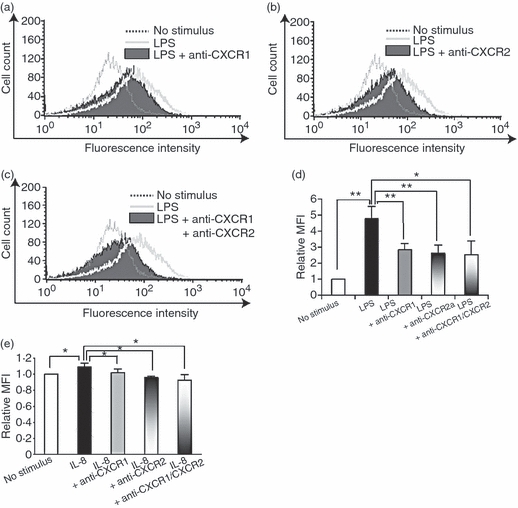Figure 4.

Effect of interleukin-8 (IL-8) receptor blockade on reactive oxygen species (ROS) production in human umbilical vein endothelial cells (HUVECs) stimulated with lipopolysaccharide (LPS) (a–d) or IL-8 (e). ROS production was assessed by flow cytometry using DCFH-DA. (a) Representative data of ROS production in LPS-stimulated HUVECs treated with anti-CXCR1 antibody. (b) Representative data of ROS production in LPS-stimulated HUVECs treated with anti-CXCR2 antibody. (c) Representative data of ROS production in LPS-stimulated HUVECs treated with both anti-CXCR1 and anti-CXCR2 antibodies. (d) Quantitative analysis of ROS production in LPS-stimulated HUVECs treated with anti-CXCR1 antibody, anti-CXCR2 antibody, or both. The data represent mean values ± SD (n = 4, **P < 0·01, *P < 0·05, Student's t-test). (e) Quantitative analysis of ROS production in IL-8-stimulated HUVECs treated with anti-CXCR1 antibody, anti-CXCR2 antibody, or both. The data represent mean values ± SD (n = 4, *P < 0·05, Student's t-test).
